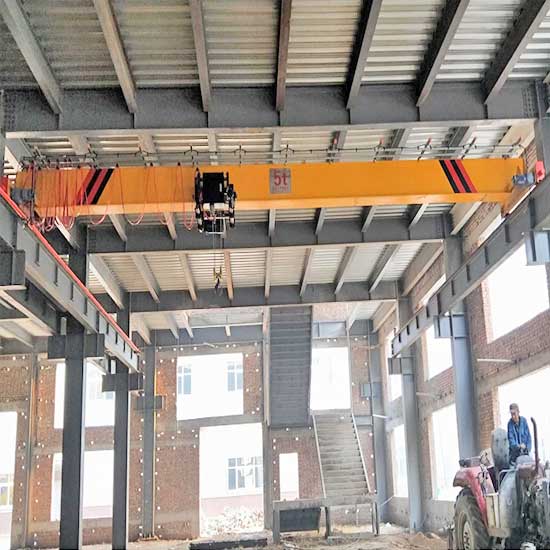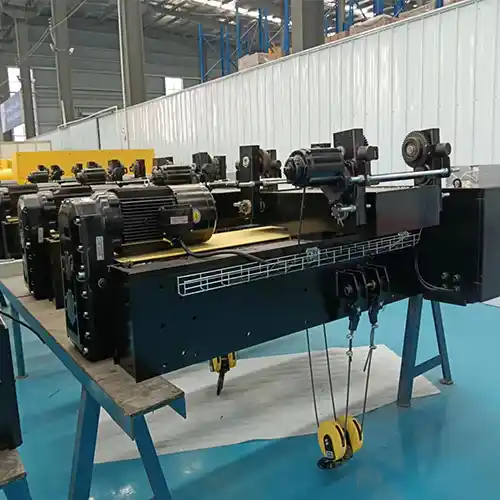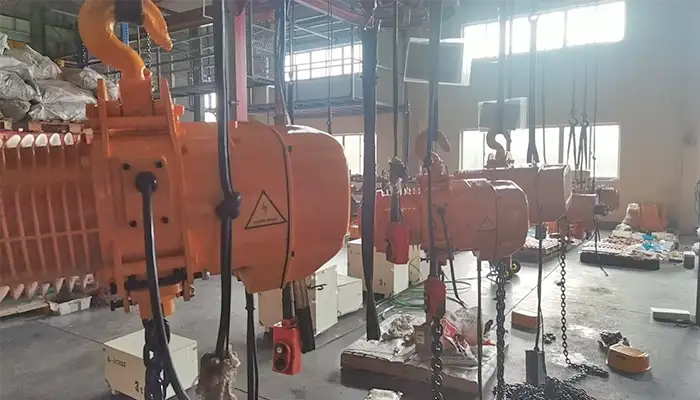Overhead Cranes for Sale Hongkong, Hot Low Headroom Bridge Cranes
Overhead cranes,1-20 ton single girder & 3 ton -100 ton double girder crane design, full & semi gantry crane, wall & floor jib crane for industrial use.
Category: Hongkong
Your Trusted Overhead Crane Manufacturer & Supplier
Overhead Cranes for Sale Hongkong, Hot Low Headroom Bridge Cranes
Top Running & Underhung Overhead Crane, Full & Semi Gantry Crane, Wall & Floor Jib Crane
Overhead cranes,1-20 ton single girder & 3 ton -100 ton double girder crane design, full & semi gantry crane, wall & floor jib crane for industrial use.
Overhead Crane Market in Hong Kong: Navigating the Heights
Hong Kong, a bustling metropolis with its iconic skyline and a vibrant economy, is also a hub for various industrial sectors. Beneath the gleaming skyscrapers and amidst the bustling streets, a critical player in the industrial landscape quietly but indispensably operates – the overhead crane.
In this blog, we delve into the fascinating world of overhead cranes in Hong Kong. We'll explore the market's dynamics, the diverse types of cranes used, their applications across various industrial sectors, and the advantages of sourcing these essential pieces of equipment from neighboring Mainland China.

A. Overview of the Overhead Crane Market in Hongkong :
- Hong Kong's Economy: Hong Kong's economic prowess is well-known. It boasts a diverse economy, with key sectors such as manufacturing, logistics, construction, warehousing, maritime activities, and more. In this dynamic environment, overhead cranes play a pivotal role in facilitating material handling, lifting, and logistical operations.
- A Growing Industrial Landscape: The industrial landscape in Hong Kong continues to grow and adapt to changing demands. From construction and infrastructure development to manufacturing and logistics, the need for efficient material handling solutions, including overhead cranes, remains constant.
B. Factors Influencing the Market:
- Proximity to Mainland China: One significant factor influencing the overhead crane market in Hong Kong is its proximity to Mainland China. This geographic advantage makes it convenient for businesses to source overhead cranes from Chinese manufacturers, given the shorter shipping distances and reduced transportation costs.
- Diverse Industrial Sectors: Hong Kong's diverse industrial sectors create a demand for a wide range of overhead crane types. Each sector, whether manufacturing, construction, warehousing, or maritime, has unique requirements and constraints that influence the choice of overhead cranes.
C. Market Trends and Growth Prospects:
- Infrastructure Development: Ongoing and future infrastructure development projects in Hong Kong, including construction and transportation initiatives, rely on overhead cranes for construction and material handling. This contributes to sustained demand in the market.
- Warehousing and Logistics: Hong Kong's status as a major logistics and trade hub necessitates efficient cargo handling and storage, with overhead cranes being a critical component of modern warehousing and distribution centers.
D. Competitive Landscape and Key Players:
- Local and International Suppliers: The overhead crane market in Hong Kong features a mix of local suppliers, international manufacturers, and distributors. This diversity in the supply chain provides buyers with various options and competitive pricing.
- Compliance and Safety: Key players in the market prioritize compliance with safety regulations, ensuring that the overhead cranes meet international safety and performance standards.
E. Benefits of Sourcing from Mainland China:
- Proximity and Convenience: The geographical proximity of Hong Kong to Mainland China makes sourcing overhead cranes convenient and cost-effective. Shorter shipping distances result in reduced transportation costs and shorter delivery times.
- Vast Manufacturing Base: Mainland China boasts a vast and well-established manufacturing base for overhead cranes. This extensive network of manufacturers provides buyers in Hong Kong with a wide range of options in terms of crane types, sizes, and capacities.
- Competitive Pricing: Chinese manufacturers often offer competitive pricing due to lower labor costs and economies of scale. Buyers in Hong Kong can benefit from cost-effective solutions, helping to manage procurement budgets more efficiently.
- Customization and Adaptability: Chinese manufacturers are generally flexible and willing to customize overhead cranes to meet the specific needs and constraints of buyers. Whether it's low headroom, unique specifications, or specialized features, customization options are often available.
In the next sections of this blog, we'll delve deeper into the various types of overhead cranes used in Hong Kong, their applications in different industrial sectors, and the crucial features that cater to the unique requirements and facility constraints in this bustling city. We'll also explore how cost-effective procurement from Mainland China contributes to the efficiency of Hong Kong's industrial landscape.
Factors affected Hongkong in Market
The overhead crane market in Hong Kong is influenced by several factors, including the region's unique economic and industrial landscape, as well as its proximity to mainland China.
- 1.Industrial Landscape: Hong Kong has a diverse industrial landscape that includes manufacturing, logistics, construction, and maritime sectors. Overhead cranes play a crucial role in various industries for material handling, lifting, and logistical operations.
- 2.Proximity to China: Hong Kong's proximity to mainland China makes it convenient for businesses to source overhead cranes and related equipment from Chinese manufacturers. Many businesses in Hong Kong leverage the manufacturing capabilities of nearby Chinese regions.
- 3.Infrastructure Development: Hong Kong has ongoing infrastructure development projects, including construction and transportation initiatives. These projects often require the use of overhead cranes for construction and material handling, contributing to demand in the market.
- 4.Warehousing and Logistics: Hong Kong serves as a major logistics and trade hub in Asia. Warehousing and distribution facilities in the region rely on overhead cranes for efficient cargo handling and storage.
- 5.Manufacturing: While Hong Kong is known for its service-based economy, it still has a manufacturing sector that utilizes overhead cranes for production and material handling. These include small and medium-sized manufacturing businesses.
- 6.Renovation and Maintenance: Existing industrial facilities in Hong Kong often require overhead cranes for renovation and maintenance work, which provides opportunities for crane suppliers and service providers.
- 7.Compliance and Safety: Hong Kong places a strong emphasis on safety regulations, including those related to the use of heavy equipment like overhead cranes. Compliance with safety standards is a critical consideration for businesses operating in the region.
- 8.Technological Advancements: Like many other markets, the overhead crane industry in Hong Kong benefits from technological advancements, such as automation and digital monitoring systems, which improve crane efficiency and safety.
- 9.Environmental Regulations: Due to its dense urban environment, Hong Kong has strict environmental regulations. Crane suppliers may need to provide eco-friendly and noise-reduction solutions to meet these requirements.
- 10.Market Competition: The overhead crane market in Hong Kong may have a mix of local suppliers, distributors, and international manufacturers. Competition within the market can influence pricing and service quality.
- 11.Global Economic Trends: Global economic trends, including trade relations and economic growth, can impact the demand for overhead cranes in Hong Kong as it affects overall industrial activity.
- 12.Economic Resilience: Hong Kong's economy has shown resilience over the years, adapting to various challenges. This adaptability can impact the industrial and crane market's ability to recover from economic downturns.
It's important to note that market conditions can change over time due to economic, political, and technological factors. For up-to-date information and insights on the overhead crane market in Hong Kong, it is advisable to consult industry reports, market research firms, and local industry associations. Additionally, working with reputable crane suppliers and service providers who have a strong understanding of the local market can be beneficial for businesses in Hong Kong.
Types of Overhead Cranes:
Hong Kong's diverse industrial landscape demands a versatile array of overhead cranes to fulfill specific material handling requirements. Here are the primary types of overhead cranes used in various sectors:
Main types of overhead crane used in Hongkong
Overhead cranes used in Hong Kong, like those used in other parts of the world, vary in type and features depending on their intended applications and the industries they serve. Some common types of overhead cranes used in Hong Kong include:
- Bridge Cranes: Bridge cranes are among the most common types of overhead cranes used in Hong Kong. They consist of a bridge that spans the width of the workspace, and a trolley that moves horizontally along the bridge. Bridge cranes can be single-girder or double-girder, with double-girder cranes typically capable of handling heavier loads.
- Gantry Cranes: Gantry cranes are similar to bridge cranes but are supported on legs that run along rails on the ground. These cranes are often used in outdoor environments, such as shipping yards and construction sites.
- Jib Cranes: Jib cranes have a horizontal jib or boom that can rotate to cover a specific area. They are commonly used in smaller workspaces or for precision lifting tasks.
- Monorail Cranes: Monorail cranes consist of a single rail with a trolley that moves along it. They are often used for assembly line applications and material transfer in a straight line.
0.25 ton to 550 ton overhead cranes for wide industrial applications. Types of overhead cranes with different crane configuration, ie, Top running overhead cranes , Under hung or overhead cranes, and free standing overhead KBK cranes, with various crane bridge girder designs, including single girder, double girder ,box girder, Beam girder, monorails, etc., are manufactured and supplied for industrial material handling in various workshops and workstations, etc.
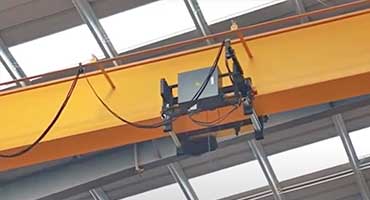
Single girder overhead crane for sale Hongkong
Single girder overhead crane designs, various single girder crane hoists, economical single girder overhead crane price, ideal overhead crane for sale Hongkong solution.
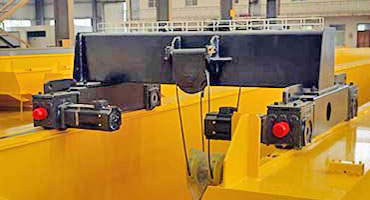
Double girder overhead crane for sale Hongkong
Double girder overhead cranes -overhead travelling hoist crane & open winch crane - with below the hook lifting devices, grab, magnet, spreader,C hook, etc.
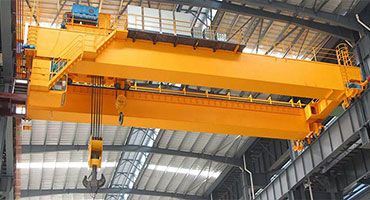
FEN standard open winch crane for sale Hongkong
FEM/ DIN open winch bridge crane-European standard double girder overhead crane with open winch trolley, your heavy duty winch crane up to 320 ton.
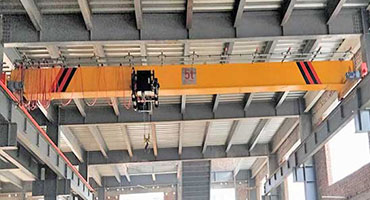
European style single girder overhead crane for sale Hongkong
European standard overhead hoist crane,single girder overhead cranes, compact FEM hoist crane design, small & light overhead hoist crane.
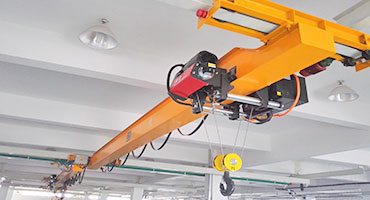
Suspension Crane & Underhung Overhead crane for sale Hongkong
Double/ single girder suspension cranes, ceiling mounted crane system, economical underslung bridge crane solution. Get free Suspension crane design for your ceiling now.
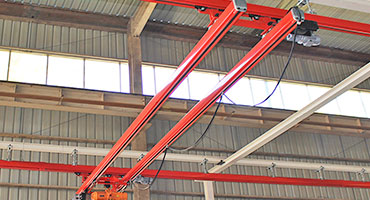
Light duty KBK crane & Workstation Crane for Sale Hongkong
kbk light crane systems, flexible kbk crane & rigid kbk crane, modular crane design, cost-effective workstation crane solution, tailored light duty bridge crane.
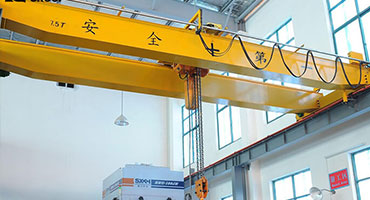
Electric chain hoist for sale Hongkong
Electric chain hoists mounted on hook, lug, manual or electric hoist trolley for types of electric chain hoist cranes with capacity of 500kg, 5 ton, 10 ton, 32 ton.
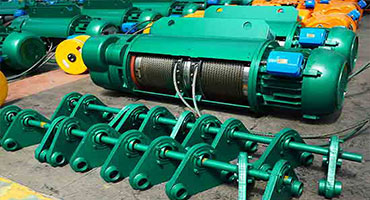
Electric wire rope hoist for sale Hongkong
Types of wire rope hoists designs for overhead hoist cranes- explosion-proof cable hoist, low profile wire hoist & single & double girder hoists for your hoist cranes.
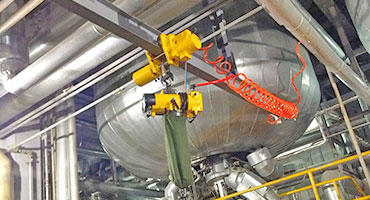
Air Hoist & Pneumatic Hoist for sale Hongkong
Safe & fast air operated hoists. Air hoist & pneumatic hoist is a compressed air powered hoist & air operated hoists,wide specification, good price.
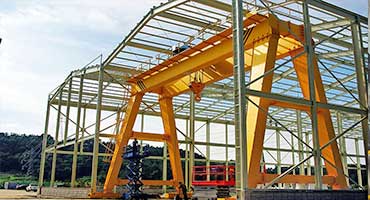
Double girder gantry crane for sale Hongkong
Double girder gantry crane specifications: Capacity: 5 ton - 500 ton, Span Length: 12~35m, Working Class: A5, A6.Ask for double girder gantry crane price.
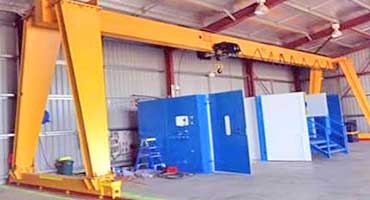
Single girder gantry crane for sale Hongkong
Single girder gantry crane specifications: Capacity: 1ton-20ton, Span Length: 8~30m, Working Class: A3, A4. Ask for single girder gantry crane price.
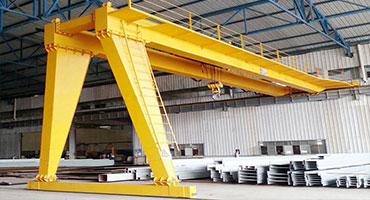
Singl Leg Semi Gantry Crane for sale Hongkong
Semi gantry crane designs, single leg gantry cranes, save half gantry crane cost with existing workshop.Semi gantry cranes & semi goliath cranes for sale.
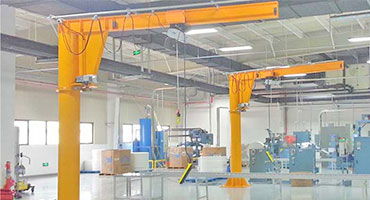
Floor mounted slewing jib crane for sale Hongkong
Free standing jib crane-Pillar mounted jib crane is a free standing jib crane with pillar jib mounted on floor, for short & crowded lifting, capacity up to 16 ton.

Wall mounted jib crane for sale Hongkong
Wall mounted jib crane & wall bracket jib crane with I beam & tie rod design for light duty handling with capacity up 2 ton. or less building structure changes.
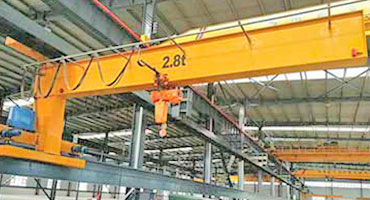
Wall travelling jib crane for sale Hongkong
Wall travelling jib crane, a perfect & economical cantilever wall travelling crane for light & long distance lifting. Wall travelling jib crane, your efficient light duty crane!
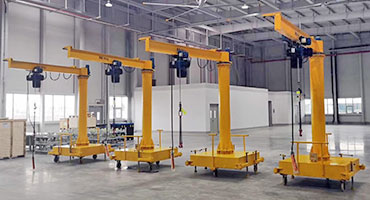
Movable & Portable Jib Crane
Portable jib crane on wheels/ rollers, self-supportive jib mobile crane design, no foundation, wide application. Mobile jib crane & Movable jib crane for sale, economical & profitable.
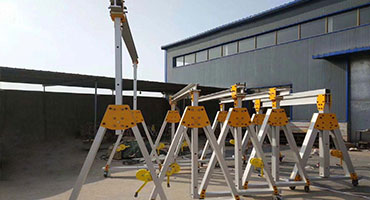
Aluminium gantry cranes for sale Hongkong
500kg -10 ton fixed gantry crane, a type of aluminum gantry crane with stationary design, with no rail & castors. Light, Foldable, Easy use & Assembly.
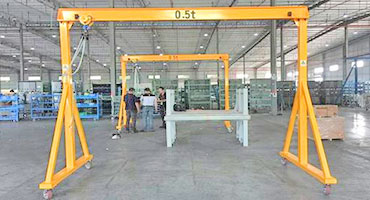
Light Crane or Small Crane for sale Hongkong
Light Crane System Small, Portable & Economical,i.e.,lightweight overhead crane system,lightweight gantry crane,light duty jib crane for all you needs.
In terms of special features or adaptations for overhead cranes used in Hong Kong, several factors may influence their design and features:
- 1.Environmental Considerations: Due to the high humidity and potential exposure to saltwater in some industries (e.g., port operations), cranes used in Hong Kong may be designed with special coatings or materials to resist corrosion.
- 2.Safety Features: Safety is a critical concern, and overhead cranes are typically equipped with features such as overload protection, emergency stop buttons, and collision avoidance systems to ensure the safety of operators and workers.
- 3.Remote Control: Many modern overhead cranes are equipped with remote control systems that allow operators to control the crane from a safe distance, improving both safety and precision.
- 4.Customization: Overhead cranes can be customized to suit the specific needs of the industry. This may include specialized lifting attachments or features tailored to unique material handling requirements.
- 5.Automation: In some industries, especially manufacturing and logistics, overhead cranes may be integrated into automated systems for efficiency and precision.
- 6.Maintenance and Monitoring Systems: To minimize downtime, some cranes may have built-in maintenance monitoring systems that track usage and notify operators of required maintenance.
- 7.Energy Efficiency: Energy-efficient features may be incorporated to reduce power consumption, which is both environmentally friendly and cost-effective.
The specific features of overhead cranes used in Hong Kong will depend on the industry, the crane's intended use, and the manufacturer. Safety and reliability are paramount, and these cranes are designed to meet or exceed relevant safety and quality standards. Companies in Hong Kong typically choose overhead cranes that best match their operational needs and safety requirements.
Uses and Applications by Industrial Sectors:
Overhead cranes are versatile tools that find a wide range of applications across various industrial sectors in Hong Kong. Here's how these cranes are put to use in different industries:
Industrial applications of overhead cranes in Hongkong, China
Overhead cranes are used in various industrial sectors where heavy lifting, precise material handling, and transportation of loads are essential. Some of the industrial sectors that commonly require overhead cranes include:

1. Manufacturing
Manufacturing facilities in Hong Kong, particularly those involved in industries like electronics, machinery, and textiles, often use overhead cranes to handle raw materials and move finished products within the production process.
- Location: Various manufacturing facilities across Hong Kong.
- Types of Overhead Cranes Used: Typically, single-girder or double-girder bridge cranes with varying capacities.
- Typical Crane Capacity: Ranges from a few tons to several tons.
- Typical Functions and Application: Overhead cranes in manufacturing are used for moving raw materials, positioning heavy machinery, transporting finished products, and supporting various production processes. They offer flexibility and precision in material handling.
- Benefits: Improved efficiency, reduced manual labor, and enhanced safety in manufacturing processes.
2. Construction
Overhead cranes are frequently used in construction projects for lifting and moving heavy materials, such as steel beams, concrete blocks, and construction equipment. They play a crucial role in building skyscrapers and infrastructure.
- Location: Construction sites in Hong Kong.
- Types of Overhead Cranes Used: Overhead and gantry cranes are commonly used in construction projects, especially for lifting and positioning heavy construction materials like steel beams and concrete panels.
- Typical Crane Capacity: Overhead cranes and gantrry cranes can have high lifting capacities, ranging from several tons to over 20 tons.
- Typical Functions and Application: Overhead and gantry cranes are used for vertical and horizontal material handling, lifting construction equipment, and placing materials at specific locations on construction sites. They play a pivotal role in large-scale construction projects.
- Benefits: Increased construction efficiency, enhanced safety, and the ability to work at height.


Warehouses and logistics centers rely on overhead cranes for efficient loading and unloading of goods, as well as for stacking and storing heavy items on high shelves or racks.
- Location: Warehouses and distribution centers in Hong Kong.
- Types of Overhead Cranes Used: Single-girder or double-girder bridge cranes, monorail cranes, and jib cranes are commonly used.
- Typical Crane Capacity: Varies depending on the warehouse's needs, often ranging from a few tons to several tons.
- Typical Functions and Application: Overhead cranes are used for loading and unloading goods, stacking and retrieving pallets, and moving heavy items within the warehouse. They are essential for efficient logistics operations.
- Benefits: Maximizing storage space, minimizing material handling time, and improving inventory management.
4. Shipbuilding and Maritime
Hong Kong has one of the busiest container ports in the world, and overhead cranes are essential for unloading containers from ships, transferring cargo to trucks and trains, and stacking containers in container yards.
- Location: Shipyards and maritime facilities in Hong Kong.
- Types of Overhead Cranes Used: Gantry cranes, shipyard cranes, and floating cranes are commonly used.
- Typical Crane Capacity: These cranes can have extremely high lifting capacities, ranging from tens to hundreds of tons.
- Typical Functions and Application: Overhead cranes in the maritime sector are used for assembling and maintaining ships, loading and unloading cargo, and handling heavy ship components. They are critical for shipbuilding and port operations.
- Benefits: Increased productivity, efficient vessel handling, and safe heavy lifting operations.


5. Mining and Quarrying
Although mining and quarrying activities are limited in Hong Kong, any operations in these sectors would require overhead cranes for material handling.
- Location: Mining and quarrying operations, although limited, may be found in Hong Kong.
- Types of Overhead Cranes Used: Depending on the specific operation, heavy-duty overhead cranes may be employed.
- Typical Crane Capacity: Heavy-duty cranes can have high lifting capacities, ranging from tens to hundreds of tons.
- Typical Functions and Application: Overhead cranes are used for lifting and transporting ore, rock, and equipment within mining and quarrying sites. They are integral to material handling in these sectors.
- Benefits: Enhanced safety, efficient material transport, and reduced manual labor in rugged environments.
6. Steel and Metal Production
Overhead cranes are commonly used in facilities that work with steel and other metals, such as foundries and metal fabrication shops.
- Location: Steel mills and metal production facilities in Hong Kong.
- Types of Overhead Cranes Used: Heavy-duty overhead cranes, often with double girders, are utilized for handling heavy steel coils, slabs, and other metal products.
- Typical Crane Capacity: These cranes are capable of lifting very heavy loads, ranging from tens to hundreds of tons.
- Typical Functions and Application: Overhead cranes are essential for material transport within the facility, including loading and unloading materials from production lines and storage areas.
- Benefits: Efficient material handling, reduced manual labor, and enhanced safety in metal manufacturing processes.


7. Power Plants and Utilities
Overhead cranes are used in power generation facilities for the installation and maintenance of heavy machinery and equipment.
- Location: Power generation facilities, including coal, nuclear, and hydroelectric plants, and utilities in Hong Kong.
- Types of Overhead Cranes Used: Heavy-duty overhead cranes are used for maintenance and installation of heavy equipment and components within power plants.
- Typical Crane Capacity: Cranes in power plants can handle significant loads, often ranging from tens to hundreds of tons.
- Typical Functions and Application: Overhead cranes are used for lifting and positioning heavy machinery, turbines, generators, and other critical components in power generation and utility facilities.
- Benefits: Efficient maintenance and installation processes, increased operational reliability, and minimized downtime.
8. Oil and Gas
- Location: Offshore platforms, refineries, and oil and gas facilities in Hong Kong.
- Types of Overhead Cranes Used: Overhead cranes in this sector may include heavy-duty gantry cranes, floating cranes, and specialized offshore cranes.
- Typical Crane Capacity: These cranes can handle very heavy loads, often exceeding hundreds of tons.
- Typical Functions and Application: Overhead cranes are crucial for lifting and positioning drilling equipment, pipes, heavy machinery, and offshore platform components.
- Benefits: Enhanced safety, efficient offshore operations, and reliable material handling in demanding environments.


9. Automotive Service and Repair
Facilities involved in automotive manufacturing or repair may use overhead cranes to handle heavy vehicle parts and equipment.
- Location: Automotive garages and service centers in Hong Kong.
- Types of Overhead Cranes Used: Overhead cranes equipped with automotive hoists or lifts are used for vehicle maintenance and repair.
- Typical Crane Capacity: Capacity can vary, often ranging from several tons to tens of tons.
- Typical Functions and Application: Overhead cranes are used for lifting and positioning vehicles, engines, and other automotive components during repair and maintenance.
- Benefits: Improved efficiency, enhanced safety for mechanics, and the ability to handle heavy automotive parts.
10. Aviation
In the aerospace industry, overhead cranes are used for assembling and maintaining aircraft and spacecraft. Hong Kong may have aerospace-related maintenance and repair facilities that require such equipment.
- Location: Aviation facilities, including aircraft assembly and maintenance centers in Hong Kong.
- Types of Overhead Cranes Used: Overhead cranes designed for aviation applications are used for aircraft assembly, maintenance, and repair.
- Typical Crane Capacity: Capacity varies based on the aircraft's size, but they often handle significant loads.
- Typical Functions and Application: Overhead cranes are employed for lifting and positioning aircraft components, engines, and fuselages during assembly, maintenance, and repair processes.
- Benefits: Enhanced safety, efficient aircraft maintenance, and precise handling of aviation components.

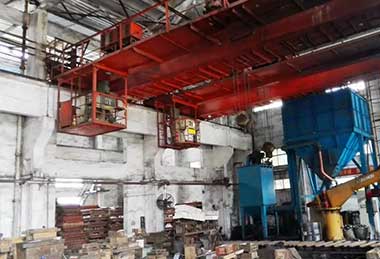
11. Foundries
- Location: Foundries and metal casting facilities in Hong Kong.
- Types of Overhead Cranes Used: Overhead cranes designed for foundry operations, often with heat-resistant features.
- Typical Crane Capacity: Capacity can range from several tons to tens of tons.
- Typical Functions and Application: Overhead cranes are used for transporting molten metal, molds, and castings within the foundry. They are crucial for metal casting operations.
- Benefits: Efficient material handling in high-temperature environments, improved safety, and precise handling of castings.
12. Food and Beverage
- Location: Some food processing plants and breweries in Hong Kong.
- Types of Overhead Cranes Used: Overhead cranes for light to moderate loads are used for material handling in these facilities.
- Typical Crane Capacity: Capacities are tailored to the specific needs of each facility, often ranging from a few tons to several tons.
- Typical Functions and Application: Overhead cranes are employed for handling large containers, equipment maintenance, and other material handling tasks within food and beverage processing facilities.
- Benefits: Enhanced efficiency in food production, improved safety, and reduced manual handling of heavy containers.


13. Textiles and Garments
- Location: Textile and garment manufacturing facilities in Hong Kong.
- Types of Overhead Cranes Used: Overhead cranes designed for light to moderate loads are used for material handling.
- Typical Crane Capacity: Capacities are customized to meet the facility's specific needs, typically ranging from a few tons to several tons.
- Typical Functions and Application: Overhead cranes are used for transporting rolls of fabric, materials, and garment production equipment within textile and garment manufacturing facilities.
- Benefits: Improved production efficiency, reduced manual labor, and enhanced safety in textile and garment production processes.
14. Paper and Pulp

These overviews provide insights into the types of overhead cranes used across various industrial sectors in Hong Kong, highlighting their roles, benefits, and typical capacities. Keep in mind that specific crane configurations and capacities may vary based on individual facility requirements and operational needs within each sector.
Typical Features of Overhead Cranes:
Overhead cranes are designed to meet specific requirements and provide reliable performance across various industrial sectors in Hong Kong. Here are the typical features that make these cranes well-suited for their applications:
A. Load Capacity and Span:
Load Capacity: Overhead cranes are engineered with varying load capacities to handle different weights of materials. This ensures that they can effectively lift and transport heavy loads specific to their intended applications.
Span: The span of an overhead crane refers to the horizontal distance it can cover. Cranes are designed with spans that match the layout and dimensions of the facility where they will be used, ensuring optimal coverage.
B. Hoisting Speed and Precision:
- Hoisting Speed: Overhead cranes are equipped with adjustable hoisting speeds to accommodate various load sizes and weights. This flexibility enables efficient material handling.
- Precision Control: Precision control systems allow for accurate positioning of loads, even in confined spaces. This is crucial in industries where precise placement is essential, such as manufacturing and aerospace.
C. Safety Features (Anti-collision, Emergency Stop):
- Anti-Collision Systems: Overhead cranes are equipped with anti-collision systems that prevent accidental collisions with other cranes, structures, or objects. These systems enhance safety in busy industrial environments.
- Emergency Stop: Emergency stop buttons and systems are integrated into crane controls, allowing immediate halting of crane operations in emergency situations to prevent accidents.
D. Controls (Remote Control, Automation):
- Remote Control: Many overhead cranes are operated remotely, providing crane operators with a safe vantage point and allowing them to control the crane's movements with precision.
- Automation: Automation features, such as programmable logic controllers (PLCs), enable the automation of repetitive tasks and the execution of complex material handling sequences.
E. Durability and Corrosion Resistance:
- Durability: Overhead cranes are built to withstand the rigors of industrial environments, ensuring long-term reliability and minimal downtime.
- Corrosion Resistance: In sectors such as maritime and power generation, overhead cranes may be exposed to corrosive elements. Specialized coatings and materials are used to protect cranes from corrosion.
F. Noise Reduction for Urban Environments:
Noise Dampening: Given Hong Kong's urban setting and proximity to residential areas, overhead cranes are designed with noise reduction features to minimize disruption to the surrounding environment.
G. Compliance with International Standards:
International Standards: Reputable crane manufacturers ensure that their products comply with international safety and quality standards. Compliance ensures that cranes meet industry-specific regulations and safety requirements.
These typical features are essential for overhead cranes to function effectively and safely in various industrial applications across Hong Kong. They contribute to the efficiency, precision, and reliability of material handling operations.
Customized Overhead Crane Features:
Hong Kong's industrial landscape often presents unique challenges and constraints that require customized solutions. Overhead crane manufacturers offer a range of customization options to address these specific needs:
A. Low Headroom Design for Space Constraints:
Low Headroom Cranes: In facilities with limited vertical space, low headroom overhead cranes are designed with reduced profile heights. This allows for efficient material handling even in areas with restricted overhead clearance.
Benefits: Maximized use of available vertical space, enabling operations in confined environments without interference.
B. Adaptation to Multi-Story Facilities:
Multi-Story Cranes: Some industrial facilities in Hong Kong are designed as multi-story buildings to maximize space utilization. Overhead cranes can be adapted to operate on multiple levels within these facilities.
Benefits: Efficient material handling in vertically oriented facilities, reducing the need for additional horizontal space.
C. Vertical Storage and Shelving Integration:
Vertical Storage Solutions: Overhead cranes can be integrated with vertical storage systems, such as automated storage and retrieval systems (AS/RS), to optimize storage capacity while minimizing the footprint.
Benefits: Efficient storage, retrieval, and organization of goods, reducing floor space requirements.
D. Noise Mitigation for Environmental Regulations:
Noise-Reducing Features: Due to strict environmental regulations in Hong Kong, overhead cranes can be equipped with noise-reducing components and technologies to minimize sound emissions.
Benefits: Compliance with noise regulations, reducing disruption to nearby residential areas.
E. Robotics and Automation Integration:
Automation Capabilities: Overhead cranes can be equipped with automation technologies, including robotic arms, sensors, and computer-controlled systems, to enable fully automated material handling processes.
Benefits: Improved efficiency, reduced labor costs, and enhanced safety through automation.
F. Specialized Equipment for Unique Applications:
Specialized Cranes: Some industrial facilities in Hong Kong may require specialized overhead cranes designed to operate in unique or challenging environments. For example, cranes for cleanroom environments or hazardous material handling.
Benefits: Tailored solutions for specific operational needs, ensuring safety and efficiency.
G. Flexibility for Rapid Reconfiguration:
Modular Design: Overhead cranes with modular components can be easily reconfigured to adapt to changing production layouts or material handling requirements.
Benefits: Quick response to evolving operational needs, minimizing downtime during reconfiguration.
Customization allows overhead cranes to be precisely tailored to the demands of Hong Kong's industries. Whether it's accommodating limited headroom, integrating with multi-story facilities, or meeting environmental regulations, these features ensure that overhead cranes can excel in this unique urban environment.
Facility Requirements in Hong Kong:
Hong Kong's workshops and factory facilities often operate within unique constraints and requirements due to the city's urban environment. Here are the key facility requirements that shape the use of overhead cranes:
A. Space Limitations and Efficient Layout Planning:
- Space Constraints: Space is a premium commodity in Hong Kong, impacting the size and layout of industrial facilities. Efficient layout planning is essential to make the most of limited floor space.
- Overhead Cranes' Role: Overhead cranes play a critical role in optimizing space usage by efficiently moving materials and goods within confined areas.
B. Height Restrictions and Low-Profile Cranes:
- Height Limitations: The vertical nature of Hong Kong's urban development and the presence of tall buildings can impose height restrictions on industrial facilities.
- Low-Profile Cranes: Low-profile overhead cranes are designed to operate effectively in low headroom environments, ensuring they can function within height limitations.
C. Noise and Environmental Regulations Compliance:
- Stringent Regulations: Due to the proximity of residential areas to industrial zones, noise and environmental regulations in Hong Kong are often stringent.
- Noise Mitigation: Overhead cranes are equipped with noise-reducing features and technologies to comply with these regulations, minimizing noise pollution.
D. Safety Standards and Fire Safety Regulations:
- Safety Prioritization: Safety regulations are a top priority in Hong Kong's industrial facilities, given their limited space and proximity to populated areas.
- Compliance: Overhead cranes are designed and installed to comply with fire safety, building codes, and occupational health and safety regulations to ensure the well-being of workers and facility occupants.
E. Adaptability and Flexibility for Changing Needs:
- Rapid Adaptation: Industrial facilities in Hong Kong must be adaptable and flexible in their operations to meet changing market demands quickly.
- Overhead Cranes' Role: Overhead cranes with modular components and customization options allow facilities to reconfigure production lines and adapt to evolving needs.
Meeting these facility requirements is crucial for the successful operation of industrial facilities in Hong Kong. Overhead cranes, with their versatility and customization capabilities, are valuable assets in addressing these challenges and optimizing material handling processes.
Featured overhead crane for low headroom workshops and facility
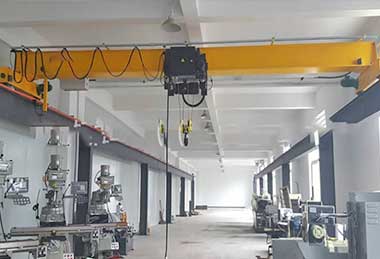
1. Low-Profile Overhead Cranes:
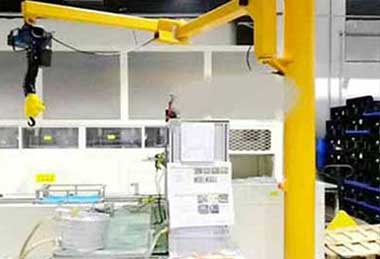
2. Articulated Jib Cranes:
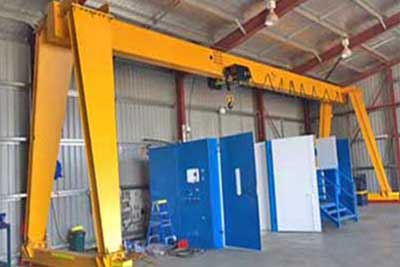
3. Freestanding Gantry Cranes:
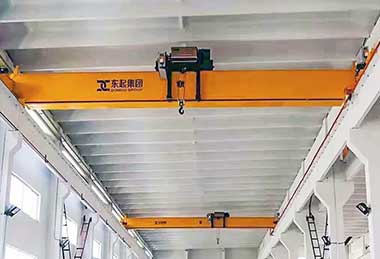
4. Compact Bridge Cranes:
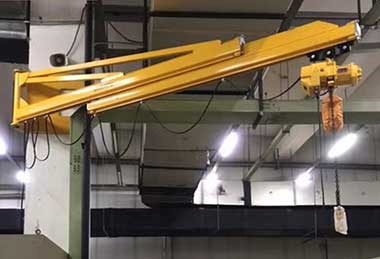
5. Telescopic Jib Cranes:
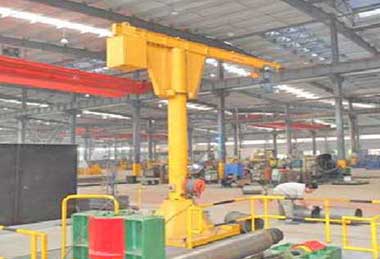
6. Counterweighted Jib Cranes:
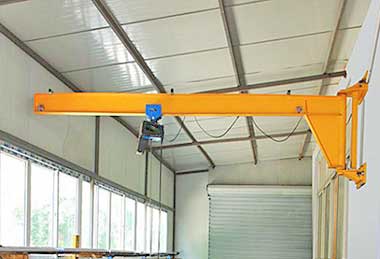
7. Wall-Mounted Jib Cranes:
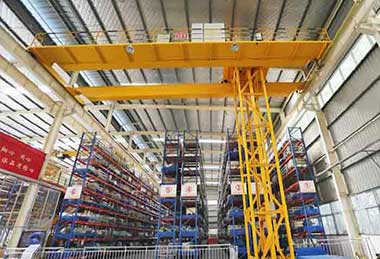
8. Stacker Cranes:
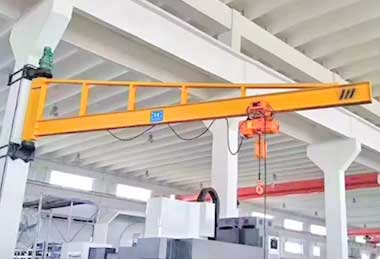
9. Electric Chain Hoists:
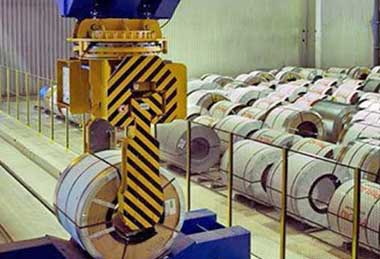
These overhead crane types are designed to address specific challenges in height and space-limited factory workshops and facilities in Hong Kong. Their features and benefits cater to efficient and safe material handling in confined or constrained environments. The choice of crane type depends on the unique needs and limitations of each facility.
Cost-Effective Sourcing from Mainland China:
Sourcing overhead cranes from Mainland China presents several advantages for businesses in Hong Kong. In this section, we'll explore the benefits of this approach and the considerations to ensure a successful procurement process:
A. Advantages of Procuring from Mainland China:
- 1. Geographic Proximity: Hong Kong's proximity to Mainland China offers logistical advantages, including shorter shipping distances and reduced transportation costs when procuring overhead cranes.
- 2. Vast Manufacturing Base: Mainland China boasts an extensive network of overhead crane manufacturers, providing a wide range of options in terms of crane types, sizes, and capacities.
- 3. Competitive Pricing: Chinese manufacturers often offer competitive pricing due to lower labor costs and economies of scale, allowing businesses in Hong Kong to manage procurement budgets more efficiently.
- 4. Customization Options: Chinese manufacturers are generally flexible and willing to customize overhead cranes to meet specific facility requirements and constraints, ensuring that cranes are tailored to the unique demands of Hong Kong's industries.
B. Considerations for Selecting Reliable Suppliers:
- 1. Reputation and Track Record: Research and select suppliers with a solid reputation and a proven track record of delivering high-quality overhead cranes.
- 2. Quality Certifications: Ensure that suppliers adhere to international quality standards and possess relevant certifications to guarantee the quality and safety of the cranes.
- 3. Technical Support: Evaluate the supplier's technical support capabilities, including installation, maintenance, and troubleshooting services.
C. Negotiating Competitive Pricing:
- 1. Request Multiple Quotes: Request quotes from multiple suppliers to compare pricing and ensure that you are getting a competitive offer.
- 2. Bulk Purchases: Consider the benefits of bulk purchases, which can lead to cost savings in the long run.
- 3. Long-Term Relationships: Building long-term relationships with reliable suppliers can lead to better pricing and ongoing support.
D. Quality Assurance and After-Sales Support:
- 1. Quality Assurance: Ensure that the purchased overhead cranes meet all quality and safety standards and undergo thorough testing before installation.
- 2. Warranty: Verify the warranty terms and conditions to guarantee after-sales support in case of issues or defects.
- 3. Maintenance Services: Establish a maintenance plan with the supplier to ensure the continued reliability and performance of the overhead cranes.
Main Projects
Related Products

Latest project
32/5 Ton Overhead Crane Sale in India: Case Study
Free consultation to Confirm Parameters & Specifications and Get
Latest Crane Price & Crane Rate.
- Types of overhead cranes : _______?
- Optional: Overhead travelling crane, goliath gantry crane,Slewing jib crane, Single girder or double girder crane,small portable crane or kbk crane, etc.
- Capacity of overhead crane: _______?
- Optional: 0.25ton, 0.5 ton, 1 ton, 2 ton, 3ton, 5 ton, 10 ton,15ton, 20ton, 25 ton, 30ton,35ton, up to 550ton, etc.
- Crane span & lifting height : _______?
- Crane travelling length : _____?
- Control of overhead crane:_______?
- Optional: pendant/ remote/cabin control
- Voltage supply of overhead crane:_____?
- Eg,: 380V50/60HZ,3Phase or others,etc.
- Application/usage of crane:_______?
- Eg,: Steel mill, ,injection mold, cement,stone, concrete,granite, general manufacturing, etc.
Just leave a message via the contact form and our hoist and crane engineer will contact you with in 24working hours.
Get In Touch
